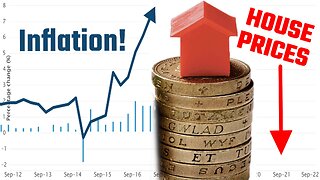Living Standards Falling as Wages Lag
You don’t have to be an economic expert to know that we’re in the middle of a cost-of-living crisis here in Australia. Electricity prices are up. Rents are up. Food prices are up. Everything’s going up, except perhaps your pay. This is the latest Consumer Price Index release from the Australian Bureau of Statistics. As you can see in the first graph, over the last three years, prices have been skyrocketing peaking at almost 8%. If you look at things like rent, the outlook is bleak. Massive price rises across the country with no sign of abating. Lack of new housing has hurt Australia.
But what about wages, I hear you ask. Surely people’s wages are going up? Well… This is the latest Wage Price Index from the ABS. As you can see in their first graph, wages have been skyrocketing too, right? Well, not so fast. Wages peaked at 3.7%, a lot less than the almost 8% shown in the CPI graph. Wages have been growing at a slower rate than prices have been increasing.
This is a lot easier to understand if we download the data for both Wage Price Index and Consumer Price Index and then plot them on the same graph. I’ve set the base level of 100 to be at the start of all the drama that kicked off about three years ago. At first, prices (in red) dropped a little bit in relation to wages (in black), but then prices took off. And now we have a situation where over the last couple of years, prices have risen a lot more than our wages, hence why we are in the middle of a cost-of-living crisis. People’s incomes buy less than what they used to. We are poorer.
Historically, wages tend to grow faster than prices, meaning the economy is becoming more productive, however, this is not the case currently. It should be noted, however, that if wages grow too fast, there is a risk of a wage-price spiral in which wage increases increase people’s disposable income creating more demand which causes price increases which in turn causes wage increases, and so on, ultimately increasing inflation. Although some economists have argued that this is simply a myth to hold down workers’ wages. Unfortunately, in the current economic climate, as long as prices keep rising at this rate, and as long as our wages don’t keep up, our living standards steadily get worse.
The Reserve Bank have stated that their goal is to reduce inflation by raising interest rates, with the stated goal of 2 to 3% inflation, shown in pink. But if interest rates are raised too far, it could very well push the economy into recession and lead to a large rise in unemployment. Ultimately, the goal is to have prices rising at 2 to 3% annually, with wages rising a little bit more than this so that living standards steadily improve for everyone. Failure to do this will result in the opposite, with many of us feeling financial pain, increased unemployment, and increased crime for many years to come. Is Australia screwed? I don’t know.
CONSUMER PRICE INDEX, AUSTRALIA, JUNE QUARTER 2023
https://www.abs.gov.au/statistics/economy/price-indexes-and-inflation/consumer-price-index-australia/jun-quarter-2023
WAGE PRICE INDEX, AUSTRALIA, JUNE 2023
https://www.abs.gov.au/statistics/economy/price-indexes-and-inflation/wage-price-index-australia/jun-2023
RESERVE BANK OF AUSTRALIA INFLATION OVERVIEW
https://www.rba.gov.au/inflation-overview.html
MUSIC
Allégro by Emmit Fenn
-
 3:15
3:15
Daily Insight
1 year ago $0.03 earnedInflation Up, House Prices Down
80 -
 14:00
14:00
The Money GPS
9 months ago $0.01 earnedLowest Living Standards For Entire GENERATION! | Debt Meltdown Explained
237 -
 3:40
3:40
Mike Martins Channel
10 months agoFood going up so FAST!, Middle class in trouble, Wages Not keeping up with inflation, Oil Dropping
5183 -
 0:39
0:39
Wealthion
11 months agoThe US Is Living In A Slow Economy
135 -
 17:31
17:31
maneco64
1 year agoRising Wages Are Not To Blame For Inflation.
1161 -
 0:42
0:42
Homes In Orlando For Sale
7 months agoThe Struggle of Homeownership Income Stagnation vs Rising Costs
1 -
 9:58
9:58
P.R.E.M TV
1 year agoLower Inflation Being Bad For Mortgage Rates | The Curious Case
7 -
 14:23
14:23
Heresy Financial
2 years agoInflation Tops Estimates & Wages DECLINE 13 Months Straight
78 -
 0:48
0:48
Wealthion
1 year agoWhy the Unemployment Rate Is A Lagging Indicator
44 -
 0:17
0:17
Wealthion
1 year agoWage inflation Vs. Housing Market prices
68